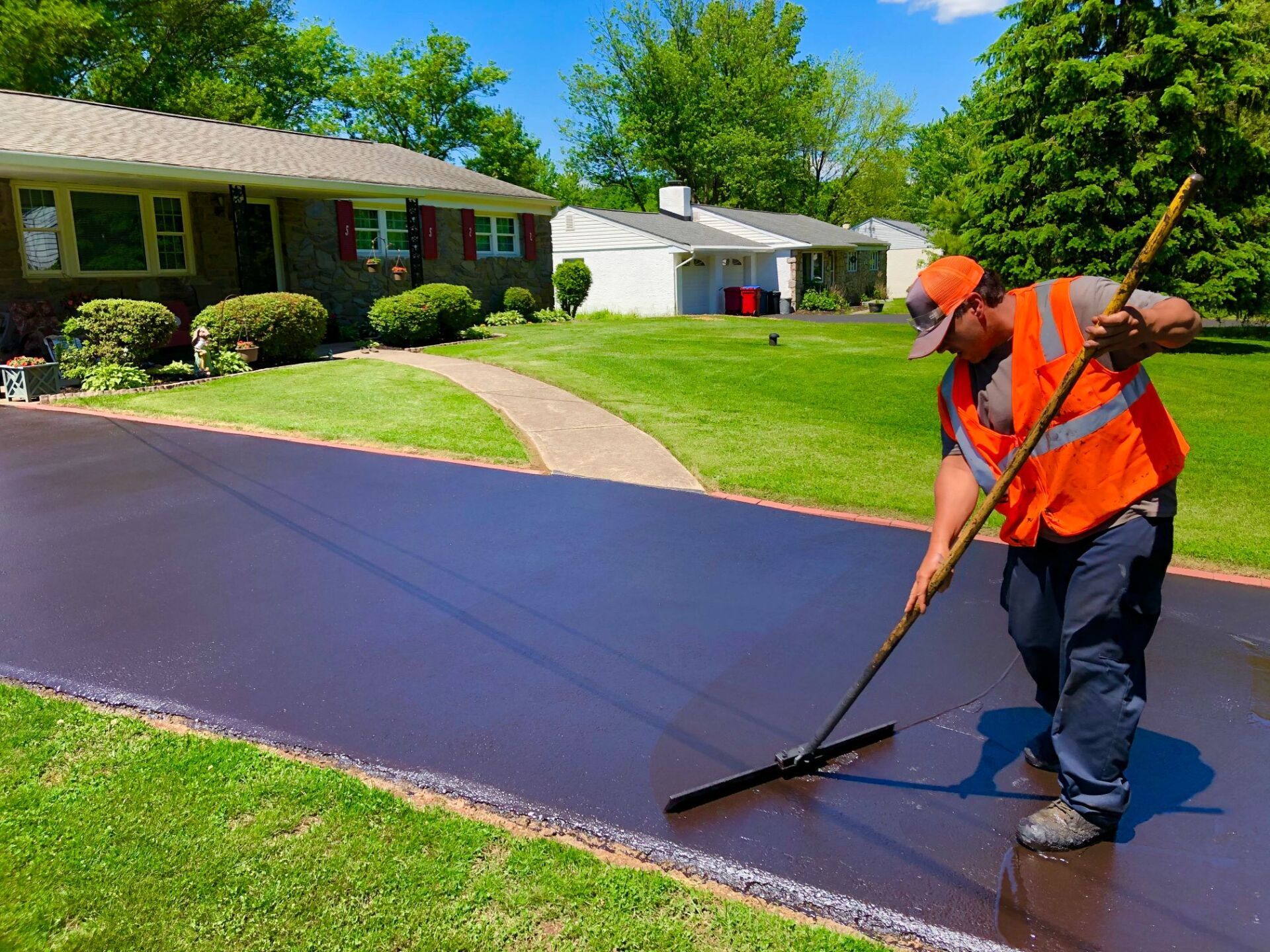Hot Mix Asphalt: A Lasting Solution for Sidewalk
Hot Mix Asphalt (HMA) has emerged as a leading sustainable choice for pavement options, providing a myriad of ecological advantages and ingenious modern technologies. As the need for green construction methods expands, checking out the nuances of HMA's sustainability can give important understandings into the future of pavement solutions.
Ecological Advantages of Warm Mix Asphalt

Additionally, Hot Mix Asphalt helps to mitigate city warm island effects. Its dark color takes in sunshine, minimizing the amount of warm showed back right into the environment compared to lighter-colored sidewalks. This can reduce ambient temperatures in urban areas, reducing the demand for cooling and inevitably minimizing energy intake.
Additionally, Warm Mix Asphalt contributes to boosted stormwater administration. Its porous nature enables water to penetrate the sidewalk and reenergize groundwater products, lowering overflow and the threat of flooding. These ecological advantages make Warm Mix Asphalt a sustainable option for paving roadways and highways.
Energy Effectiveness in HMA Production
Is energy performance an important variable in the manufacturing of Warm Mix Asphalt (HMA)? Energy plays a considerable role in the manufacturing of HMA, influencing both expense and ecological sustainability. One key facet of power effectiveness in HMA manufacturing is the use of warm mix asphalt (WMA) modern technologies.
In addition, improvements in plant technologies have actually caused more energy-efficient HMA manufacturing processes. Modern plants are made with functions like recycled asphalt sidewalk (RAP) handling capabilities, reliable burner systems, and boosted insulation, all adding to power cost savings. By maximizing energy use in HMA production, the sector can minimize its carbon footprint while preserving top quality pavement products. Energy performance is, therefore, a critical consideration in ensuring the sustainability of Hot Mix Asphalt manufacturing.
Recyclability of Warm Mix Asphalt
The recyclability of Warm Mix Asphalt (HMA) is a pivotal element of its sustainability and lasting ecological impact. HMA is among one of the most recycled products in the USA, with over 100 million lots of recovered asphalt sidewalk (RAP) being recycled every year in brand-new sidewalk construction. Recycling HMA provides a number of environmental advantages, such as lowering the demand for virgin products, lowering energy consumption during production, and reducing the amount of waste sent to landfills.
The process of reusing HMA includes milling the existing sidewalk, squashing it into smaller sized items, and mixing it with brand-new accumulation and asphalt binder to create a recycled mix. Overall, the recyclability of HMA plays a substantial function in promoting lasting methods within the pavement market.

Long-Term Efficiency of HMA
Asphalt sidewalks show durability and resilience over an extended duration, mirroring the lasting efficiency of Warm Mix Asphalt (HMA) The long life of HMA can be connected to its capacity to hold up against rush hour lots, rough weather, and the impacts of aging. Research studies have shown that well-designed and effectively created HMA sidewalks can last for twenty years or more with regular upkeep. The secret to making best use of the lasting performance of HMA depends on using high-quality products, complying with best practices in building and construction, and carrying out effective maintenance techniques. Our site Proper water basics drainage, routine evaluations, and prompt repair services are vital for preserving the architectural stability of HMA pavements with time. Furthermore, advancements in HMA modern technology, such as the usage of polymer-modified binders and warm mix asphalt, have actually better improved the durability and long life of HMA pavements. By focusing on quality construction and maintenance practices, HMA remains to verify itself as a lasting and affordable solution for lasting pavement facilities.

HMA: Durability and Sustainability
Showing both resilience and sustainability, Warm Mix Asphalt (HMA) has actually come to be a cornerstone in the construction of durable pavement frameworks - angled parking. HMA's resilience comes from its capacity to endure hefty loads, harsh climate condition, and high website traffic quantities, making it a reliable choice for highways, freeways, and flight terminal paths. The structure of HMA, which commonly includes aggregates, binder, and filler, plays a vital duty in improving its long life and resistance to tear and use
In addition, HMA's sustainability lies in its recyclability and energy-efficient production procedure. The capacity to recycle redeemed asphalt pavement (RAP) in brand-new HMA blends lowers the need for virgin materials and reduces the environmental influence of pavement building and construction and upkeep. Furthermore, the power efficiency of creating HMA hinges on its reduced blending temperatures compared to other pavement products, causing reduced energy consumption and greenhouse gas discharges.
Verdict
In verdict, warm mix asphalt (HMA) supplies a lasting remedy for sidewalk with its eco-friendly features. HMA's recyclability, power performance in manufacturing, and lasting resilience make it an environment-friendly option for roadway building. By explanation saving natural resources, reducing waste, and lowering greenhouse gas exhausts, HMA plays a critical duty in advertising sustainability in facilities development. Its ability to minimize city warm island impacts even more underscores its importance in developing environmentally aware and durable pavement systems.
HMA is one of the most recycled products in the United States, with over 100 million loads of redeemed asphalt pavement (RAP) being reused every year in new sidewalk building.The procedure of recycling HMA involves grating the existing pavement, squashing it into smaller sized pieces, and blending it with brand-new aggregate and asphalt binder to develop a recycled mix.Asphalt pavements show sturdiness and resilience over an extensive period, mirroring the long-term efficiency of Warm Mix Asphalt (HMA) In addition, improvements in HMA innovation, such as the use of polymer-modified binders and cozy mix asphalt, have actually further improved the resilience and long life of HMA sidewalks. The ability to recycle redeemed asphalt pavement (RAP) in new HMA combinations reduces the demand for virgin products and decreases the environmental effect of sidewalk construction and maintenance.